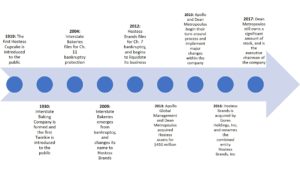Roam Free From the Value Investing Herd
Although allegedly a value investor, my own portfolio is usually idiosyncratic in two respects:
1. The position sizes I take (right now they’re 50% / 28% / 15% / 7%) are not the position sizes well-known value investors use.
2. The stocks I own are not owned by well-known value investors.
A lot of readers comment on point #1 (my level of portfolio concentration is by far the topic I get the most emails about). No one ever comments on point #2.
To prove to you that almost none of the stocks I own are owned by well-known value investors, I’ll use Dataroma.
Dataroma tracks the portfolios of about 60 investors. I would call most of them “value investors” and some of them “famous” in the sense that the sort of folks who read this blog would have heard of them.
Here’s my portfolio’s popularity according to Dataroma:
· Undisclosed Position (50%): One of the investors tracked at Dataroma owns this stock. He has less than 1% of his portfolio in it.
· Frost (28%): No investor tracked at Dataroma owns this stock.
· BWX Technologies (15%): No investor tracked at Dataroma owns this stock.
· Natoco (7%): This is a Japanese stock that Dataroma doesn’t track.
Basically, no famous value investor has a meaningful amount of his portfolio in any stock I own.
This is very different from almost all the stocks I get emails about. People want to talk to me about stocks that a lot of value investors own. They want to talk about stocks that you can find in portfolios over at Dataroma or GuruFocus and that you can read threads about on Corner of Berkshire and Fairfax or read write-ups about at Value Investors Club.
My favorite investing book is Joel Greenblatt’s “You Can Be a Stock Market Genius”. If I can cheat a bit, I’d say my second favorite investing book is the section of “The Snowball” that details Warren Buffett’s career from about 1950-1970.
Both books teach you the importance of doing your own work. In fact, my favorite Ben Graham quote is:
“You are neither right nor wrong because the crowd disagrees with you. You are right because your data and reasoning are right.”
The key word here is “your” data and “your” reasoning. At some point, you have to go into a room alone with just the 10-K. And when you come out of that room you need an appraisal value for that stock that’s yours and yours alone.
I would say that 90% of the investors I talk to never get this far. They pick their own stocks. But, they don’t do their own work.
Nothing is going to make you a better investor faster than just picking the 10-K of a stock that’s not well-covered and coming up with an appraisal value for that stock on your own. Repeat this every week. And you’ll be a better investor in no time.
To get you started, here are …
Read more
